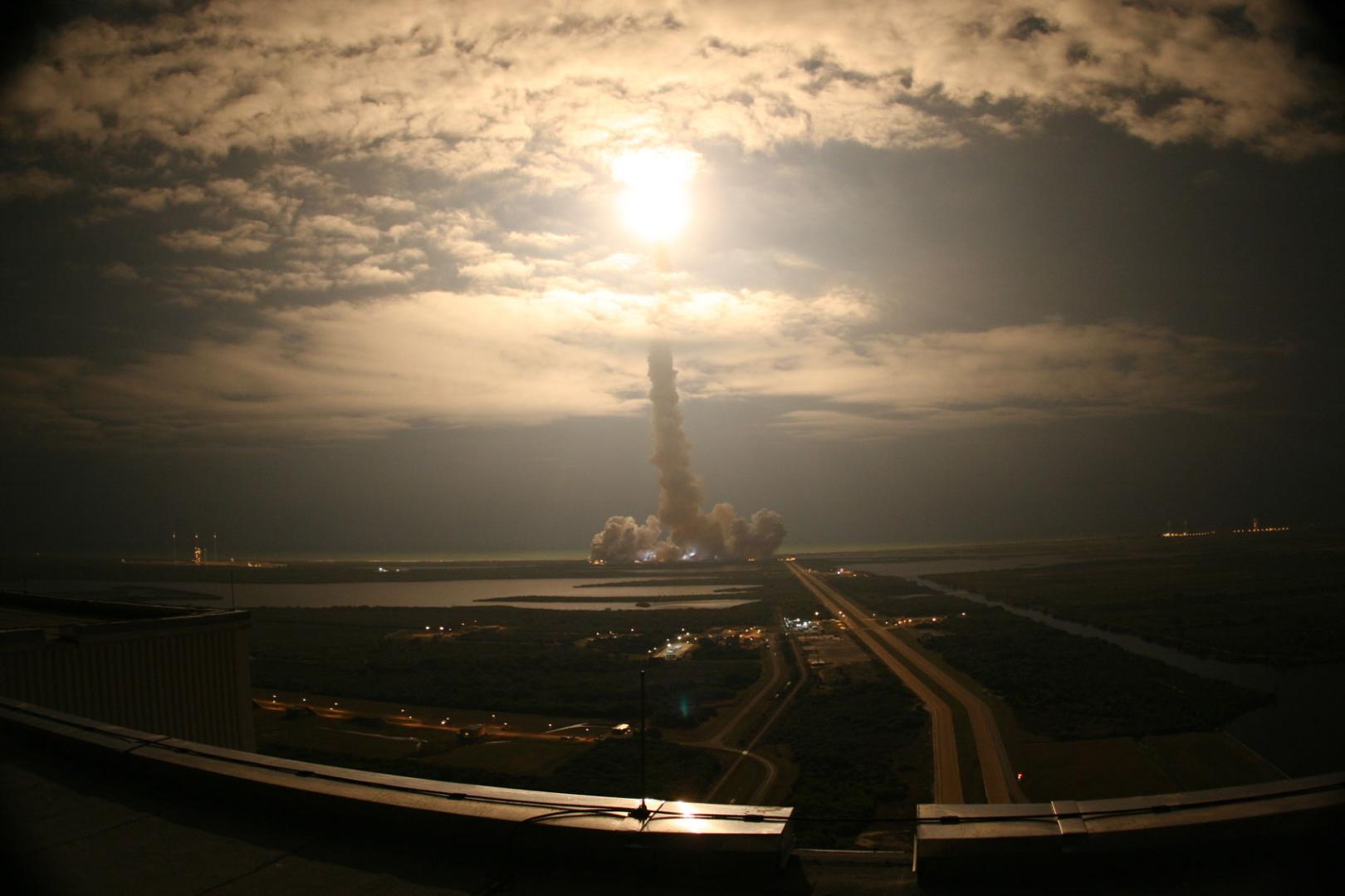
Date:
The Falcon Heavy launch scheduled for this afternoon has me nostalgic for the days of the space shuttle launches. As a photographer and digital media producer, I covered over 50 space shuttle launch attempts for National Geographic and AOL from 2005 to 2011.
People would always ask me, “Why do you keep going back?” It was expensive (it was a self-funded project and I don’t live in Florida), time consuming, heart breaking, and exhausting. And honestly, every time I would go, I would make the decision that it was my last launch: I’d seen enough, and I didn’t need to come back.
Then, launch would happen. Standing at the countdown clock by the press center at Kennedy Space Center, you are approximately 3.3 miles from the launch pad. This is the closest point anyone can physically be to the launch, aside from a small team of specially trained emergency crew egress assistants, and even they weren’t much closer.
First, you see the steam from the igniting of the engines, billowing out the side of the launch pad. Then, an orange glow as the shuttle lifts off the pad. But you hear nothing. You feel nothing.
It takes several (very long) seconds for sounds to reach you, just three miles away. After what felt like an eternity, you hear the rumble of ignition. And about 20 seconds later, after the shuttle is well into the sky, you hear the crackle and rumble and the sheer power of the solid rocket boosters.
Next, the shockwave hits. It’s hard to describe, but I’ve likened it to standing next to a speaker at a concert: it rumbles through your body and pops in your ears. Finally, you hear every piece of glass and metal in all the nearby buildings shake, as the shockwave washes over you.
Oh heck yeah, I’m coming back.
The SpaceX Falcon Heavy will be more powerful than the space shuttle launches I witnessed. With 5 million pounds of thrust, the shockwave will rattle your bones.
Why are bigger and more powerful rockets important? How large and heavy a payload we can lift into space, how far it can travel, and how fast it gets there are entirely dependent on how much thrust we have to lift it off earth.
Saturn V, the rocket that took astronauts to the moon, needed its 7.5 million pounds of thrust to propel all the stages of the Apollo program into a lunar trajectory. Leaving Earth’s orbit to explore other planets and deep space takes a lot of power, and very few rockets can get the job done. Space X is trying to make that power more affordable by demonstrating that even the really big rockets can be reusable -- and comparatively cost effective.
I’m sad to be missing this first launch attempt in person, although I know there will be many more. But I’ll be watching, and remembering.
Learn More about Orbital and Escape Velocity
"By exerting more force, or thrust, to a given payload, it will achieve a much higher velocity. It will also go much farther from Earth before gravity succeeds in pulling it back.
To put an object into orbit around Earth, a velocity of at least 8 kilometers per second (18,000 miles per hour) must be achieved, depending on the precise orbit desired. This is called orbital velocity. Orbital velocity is attained when the vehicle is moving in the right direction, fast enough to miss Earth as it falls back. The actual resulting course keeps it in space. In effect, it is falling continually around Earth.
To break away from Earth’s gravity for distant space missions, a velocity greater than 11 kilometers per second (25,000 miles per hour) is required. This is called escape velocity."
Source: Aerospace[dot]org


